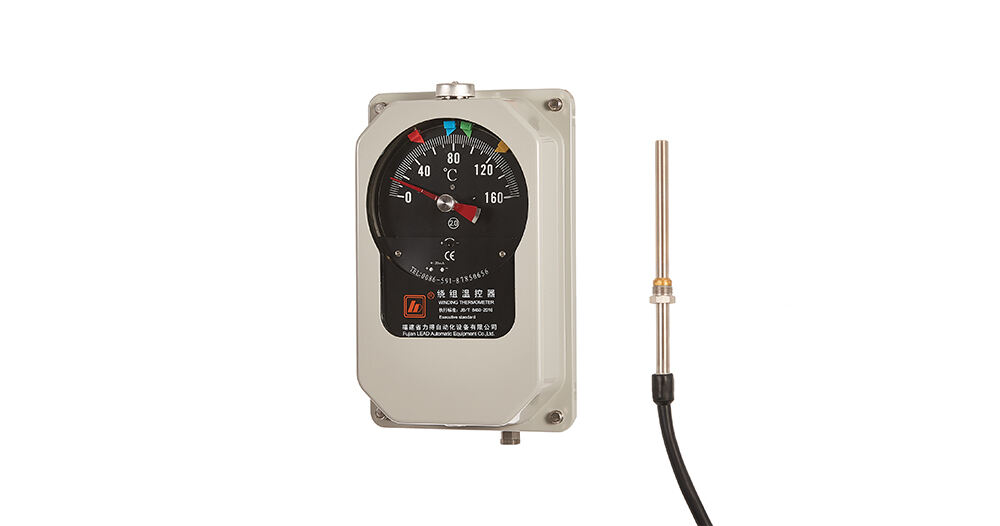
Temperature controller s are vital components in electrical power systems, responsible for stepping up or stepping down voltage to ensure efficient power transmission over long distances. These devices operate under demanding conditions and face several challenges related to their design, operation, and maintenance. Overcoming these challenges is crucial to ensure the reliability and longevity of transformers, as well as the overall stability of the electrical grid. This article explores some of the key challenges in power transformer design and operation and proposes strategies to address them.
1. Thermal Management and Cooling
One of the most pressing challenges in power transformer operation is managing heat generation. Transformers dissipate a significant amount of heat due to electrical losses in the core and windings, particularly under high load conditions. If the temperature exceeds acceptable limits, it can lead to insulation degradation and, ultimately, transformer failure. Cooling systems, such as oil-based and air-based cooling, are commonly employed, but they face limitations in terms of efficiency and capacity.
Solution: To address thermal management issues, transformers can be designed with advanced cooling techniques, such as hybrid cooling systems combining oil and air or even using more effective coolants like synthetic ester fluids. Monitoring systems that provide real-time data on transformer temperatures can help operators adjust cooling settings dynamically and prevent overheating. Additionally, improving transformer design to minimize losses through better core material choices and advanced winding configurations can reduce heat generation.
2. Electrical Stress and Insulation Aging
The insulation system in a transformer plays a pivotal role in ensuring the safe operation of the device. Over time, electrical stress, thermal cycling, and environmental factors can degrade the insulation, leading to reduced performance or even failure. This is especially a concern in transformers operating in extreme weather conditions or those subjected to frequent load changes.
Solution: A key strategy in combating insulation aging is the use of high-quality, advanced materials such as cellulose-based insulation, which has a longer lifespan, or synthetic insulators that can handle higher stresses. In addition, maintaining optimal operation within the transformer’s rated load and minimizing overloading can help reduce the electrical stress on insulation. Advanced monitoring techniques, like dissolved gas analysis (DGA), can provide early warnings of insulation problems, enabling timely intervention.
3. Partial Discharge and Overvoltages
Partial discharge (PD) is a phenomenon where electrical discharges occur within the insulation system but do not fully bridge the gap between conductors. Over time, PD can cause significant damage to transformer insulation, leading to failure. Overvoltages, often due to lightning strikes or switching operations, can also stress transformer components, leading to insulation breakdown or damage to winding turns.
Solution: The risk of PD and overvoltages can be mitigated through proper design considerations, such as using high-grade insulation materials and ensuring adequate spacing between conductors. Installing surge arresters and voltage regulators can help control overvoltage events and protect the transformer. Regular monitoring for PD through advanced techniques like ultrasonics and electrical signature analysis can also aid in detecting early signs of damage.
4. Mechanical Stress and Vibration
Transformers experience mechanical stresses from internal forces, such as short-circuit currents, as well as external vibrations from nearby machinery or environmental factors. These forces can lead to deformation of the transformer’s core and windings, potentially causing electrical failure or mechanical damage.
Solution: Designing transformers to withstand mechanical stresses involves reinforcing the core and windings to resist deformation and minimizing vibration through proper installation practices. Additionally, using advanced damping systems can help reduce the impact of vibrations. For transformers that operate in locations with significant seismic activity, specialized supports and base designs are essential to ensure stability during earthquakes.
5. Aging and Maintenance
Over time, all transformers will undergo a natural aging process that can lead to performance degradation. Regular maintenance is essential to ensure their long-term reliability, but maintenance can be costly and time-consuming, especially for large, complex transformers in critical locations.
Solution: A predictive maintenance approach using advanced condition monitoring systems can help identify potential issues before they lead to failures. Techniques such as thermal imaging, vibration analysis, and oil testing can help detect early signs of wear or degradation. Additionally, the use of smart transformers, equipped with IoT sensors and AI-based diagnostics, can allow for real-time monitoring and automated maintenance alerts, reducing downtime and maintenance costs.
Conclusion
Power transformer design and operation present numerous challenges, from thermal management and electrical stresses to mechanical vibrations and aging. Addressing these challenges requires a combination of advanced materials, improved cooling techniques, sophisticated monitoring systems, and innovative designs. By investing in these solutions, utilities can extend the lifespan of transformers, improve operational efficiency, and enhance the overall reliability of the electrical grid.
